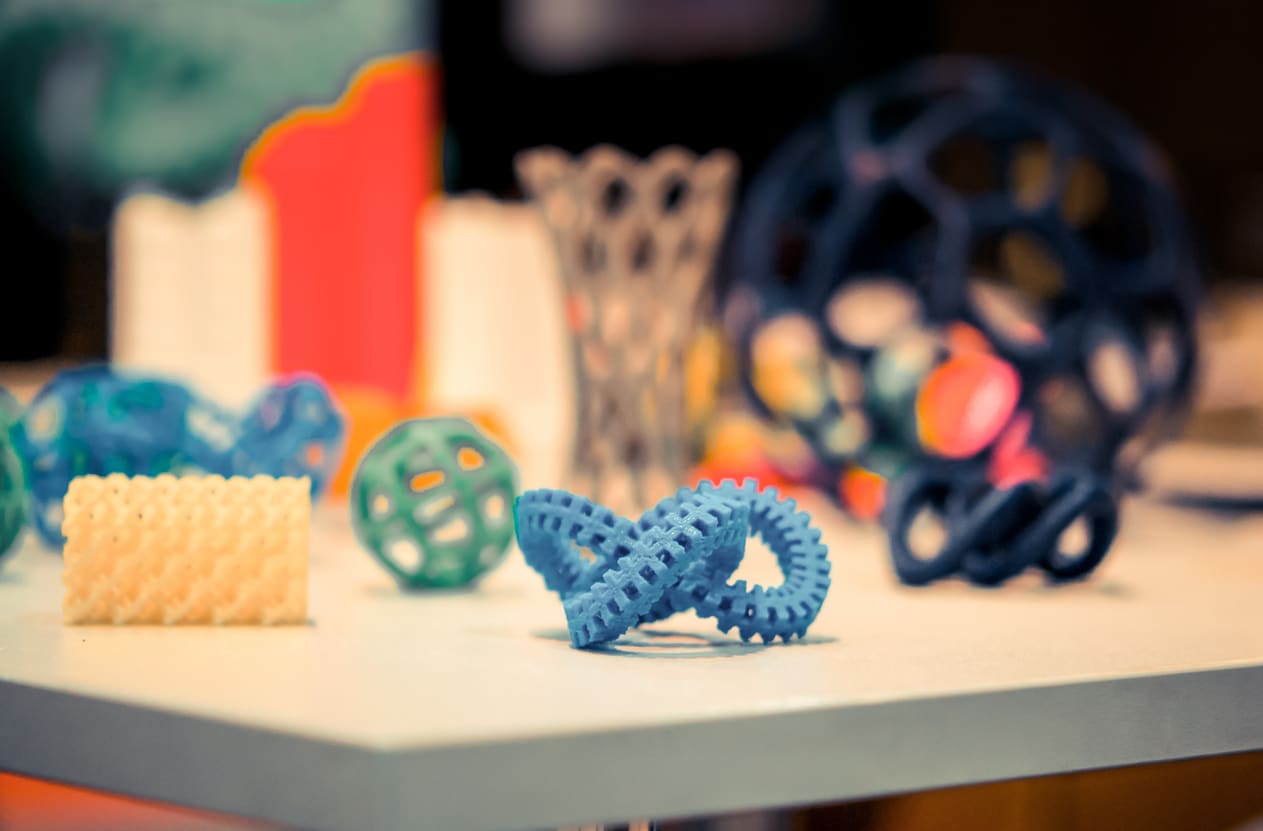FDM - Fused Deposition Modeling
FDM 3D printing is a “material extrusion” 3D printing process, for rigid to flexible functional parts.
What is Fused Deposition Modeling - FDM - 3D printing, and how does it work?
FDM 3D printing is an additive manufacturing method patented by American mechanical engineer and Stratasys founder Scott Crump in 1989. Crump, seeking a faster way to make prototypes, began experimenting with semisolid plastics, manually melting them in layers with a glue gun. His first creation? A toy frog for his daughter. He called this method Fused Deposition Modeling (FDM). Once Crump developed computer-aided manufacturing (CAM) software to automate the process, he started selling Stratasys 3D printers for around $12,000.
It is important to note that Stratasys has trademarked the term FDM, so other companies often refer to this 3D printing method as Fused Filament Fabrication (FFF), among other registered names. This article employs the terms interchangeably.
Whichever word you use, this filament extrusion technology has come a long way. While Scott Crump designed and priced his first 3D printer for in-office industrial prototyping, by the 2000s, FDM-type printing had become the most common type of at-home desktop 3D printing technology. Today, consumers can choose from a multitude of FDM 3D printer options for under $200. Some companies have even used FFF principles to create a handheld 3D printing “pen”, the cheapest of which is less than $100 and is marketed for schoolchildren.
Discover SOLIDWORKS 3DEXPERIENCE for Makers
FDM 3D Printing: General Principles
FDM 3D printing is a “material extrusion” 3D printing process. A spool feeds thermoplastic filament through an extruder that heats, melts, and extrudes the plastic through a thin nozzle. Filaments are available in 1.75 mm or 2.85 mm diameter, and standard nozzles have a diameter of 0.4 mm.
The extruder and nozzle form the print head, which moves along the build plate to draw every layer, one after the other. It follows a set of instructions from a specific file – generally in GCODE format – which, in simple terms, contains a sliced version of a 3D model.
Each “slice” corresponds to a unique layer. The taller the object, the more slices there will be– amounting to longer printing times. A vast majority of 3D printers offer a standard layer thickness of 0.1 mm. As the print head deposits the filament, the plastic melts onto the previous layer and then hardens with the help of cooling fans mounted on the print head and/or inside the build chamber.
General Characteristics of Filament-Based 3D Printing
While FDM 3D printing used to involve a relatively steep learning curve, it has become much easier to tame with the standardization of features like automatic bed leveling, closed build chambers, and power failure recovery. Developments in the areas of software and materials have also made this affordable, office-friendly technology progress, and FFF is now a widespread tool for rapid prototyping and low-volume production.
Filament 3D printing does have its downsides, however. FDM-printed parts are anisotropic, meaning they are more robust in one direction than the other. Their layers are often visible to the naked eye, with rough surface finishes that may require post-processing steps such as sanding, tumbling, vapor smoothing, etc.
Support removal– another post-processing step– is also necessary on parts with overhangs greater than 45 degrees. 3D printers with dual extruders can, nonetheless, 3D print plastic and soluble support material simultaneously. Soluble support material is easy to rinse away and needs less surface finishing.
FDM 3D printed parts tend to be less precise and less durable than parts made with other additive manufacturing methods such as SLS or MJF. Innovations in materials and printing methods, like continuous fiber 3D printing, are changing that.
Which materials are compatible with FFF printing?
FDM 3D printers use a range of thermoplastics. The most common and easiest to print is PLA (polylactic acid), a biodegradable thermoplastic that is fast and cost-effective but low in strength and durability.
Also common and more durable, however more challenging to print, is ABS (acrylonitrile butadiene styrene), a plastic used in a range of standard items from laptop keys to Legos.
Nylon (a polyamide, PA) filament has become a popular alternative to PLA and ABS for its ability to make durable FDM parts, with usages from prosthetics to cases and enclosures.
It is also possible to 3D print versatile thermoplastics such as PETG (polyethylene terephthalate with glycol added), which has practical 3D applications for prototyping consumer packaging. TPU, or thermoplastic polyurethane, produces rubber-like FDM printed parts useful for prototyping parts like seals and gaskets.
Innovations in technology and materials have expanded the use cases for FDM 3D printing beyond plastics. Carbon-fiber-infused FDM printing builds parts as strong as aluminum, such as the FDM Nylon 12 Carbon Fiber filament made by Stratasys.
Other innovations explore the integration of electronics into FDM-printed parts, using metal-filled pastes to make integrated circuits, batteries, and conductors. The Virtual Foundry, a Wisconsin-based company, is one example; they manufacture FDM filaments infused with metal, glass, and ceramics. Following a debinding and sintering process to melt away the plastic, the resulting parts can boast the strength and thermodynamic properties of metals and other robust materials.
Use Cases: From Aerospace to Education
Professionals are now leveraging FDM 3D printing for so much more than industrial prototyping, including large-scale manufacturing and the engineering of highly complex parts. It is particularly beneficial to the production of jigs and fixtures in industries such as automotive and aerospace.
In aerospace, the Pennsylvania-based company Liberty Electronics uses Stratasys printers to fabricate 3D-printed parts for a missile application, reducing their customer’s lead time and cost by 75%. Many automotive companies employ FDM printing for various applications, from prototypes to spare parts for classic cars. One significant example involves the German company BigRep, which made a fully functional motorcycle– the NERA– with their FFF 3D printers.
As 3D printing has evolved, other subprocesses such as SLA and SLS continue to emerge as alternatives to FDM. But FDM isn’t going away any time soon. FDM remains one of the simplest 3D printing methods, popular at home and in the classroom. Companies like MakerBot have long marketed their products as a fun, efficient way for students to learn about different subjects.
Also, since FFF 3D printing is cost-effective and accessible, it allows for rapid innovations with relevance to fields like medicine. During the COVID-19 pandemic, the world leveraged FDM printers to produce seals for N-95 respirator masks, transparent face shields, and swabs for viral specimen collection kits.
As of this writing, filament-based 3D printing remains best suited to prototyping applications due to durability concerns. However, as the examples above have shown, various companies are expanding the types of filaments used in material extrusion 3D printing. These innovations will likely only continue, making FDM 3D printing an important additive technology for many years to come.
Get multiple quotes for your parts in seconds

